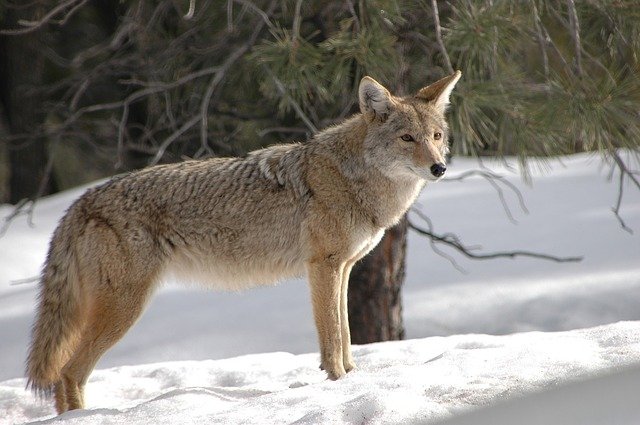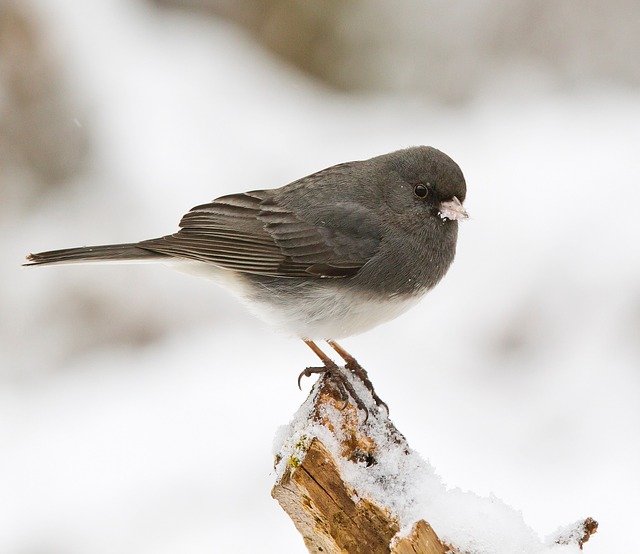What Kind Of Animal Makes Tracks In A Straight Line
Practise you look frontward to the offset snowfall of the year? Or practise you wish we could skip wintertime altogether? Either way, we accept a challenge for you lot! Acquire how to identify tracks in the snow, and then take our quiz to challenge yourself!

Coyotes
Coyote prints are ovular and normally 2.v to 3.v inches long, sometimes with sharp claw marks on the front two toes. The four toes are usually close together, while domestic dog prints are thicker and splayed in unlike directions.

In improver, coyotes typically run or walk in a direct line, with each paw print well-nigh direct in front end of the next and with few meandering lines. Domestic dogs, on the other hand, aren't as worried about conserving free energy, so they wander all over the place, frequently crossing over their ain paths.

Expect for coyote tracks in fields or along woodland edges, where they forage for food.
Red Foxes

Fox tracks can be similar to coyote tracks, although they are typically smaller (two-three inches long) and daintier. Another way to distinguish flim-flam tracks is by the clarity of the print: In wintertime, red foxes grow thick fur on their feet, which tin can blur their tracks considerably.
Like coyotes, red foxes travel in straight lines with little meandering or crossing of their own tracks. You might also spot pounce marks in the snow where a fob dove under the surface to grab its prey.
Nighttime-Eyed Juncos & Wild Turkeys

It can exist easy to spot birds up in their air during the winter, but try looking down for some other challenge: spotting their tracks in the snow. Nighttime-eyed juncos and wild turkeys commonly exit tracks that you lot might spot in the pastures and woodlands of CVNP.

Wild turkey tracks are virtually four inches long with three toes. The heart toe points straight frontwards and is longer than the other two. Look for turkey tracks in open up pastures or erstwhile farm fields, where the birds forage for leftover grains.

Dark-eyed juncos are quite a chip smaller than wild turkeys and like to hop around on forest floors while looking for food. Prints are only nearly 1.5 inches long and accept iii forward-facing toes, with i longer toe reaching backside.
White-Tailed Deer

The pointed stop of deer tracks evidence you the direction the deer was traveling. Image: Canadian Wildlife Federation
White-tailed deer tracks are some of the about common tracks you'll see in CVNP. Look for middle-shaped prints from a deer's hooves. When walking slowly, deer barely lift their anxiety, so you can also wait for drag marks betwixt each pace.
River Otters

One last print: the river otter! Some of our nearly playful animals, otters have prints that testify five pointed toes around a small heel pad. Tracks are wider than they are long—3 to 3.five inches long and 3-four inches wide.
Otters—and even their tracks!—can be tricky to spot, simply your best chance is to visit Beaver Marsh and look for clues in the water ice and snow.
Exam Your Knowledge
Let's see how well you can identify CVNP animal tracks in the snow.
Take the Quiz
Source: https://www.conservancyforcvnp.org/challenge-yourself-identify-tracks-in-the-snow/
Posted by: mercerciat1967.blogspot.com

0 Response to "What Kind Of Animal Makes Tracks In A Straight Line"
Post a Comment